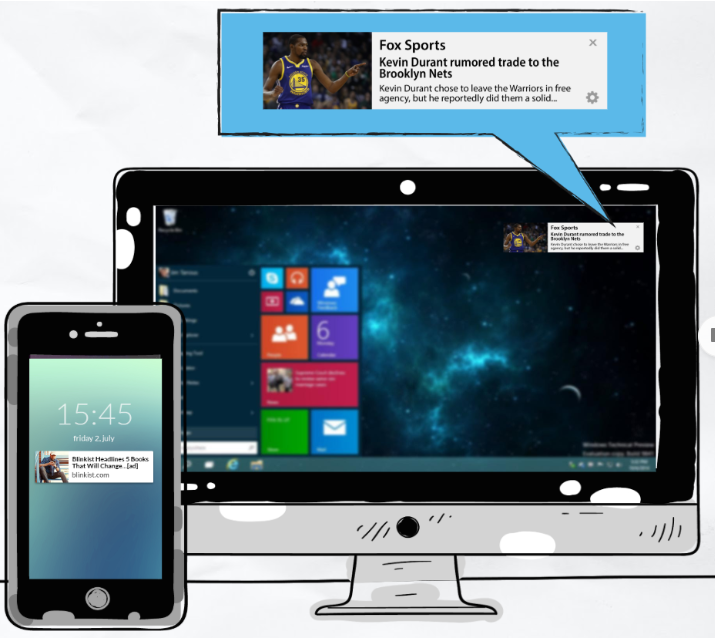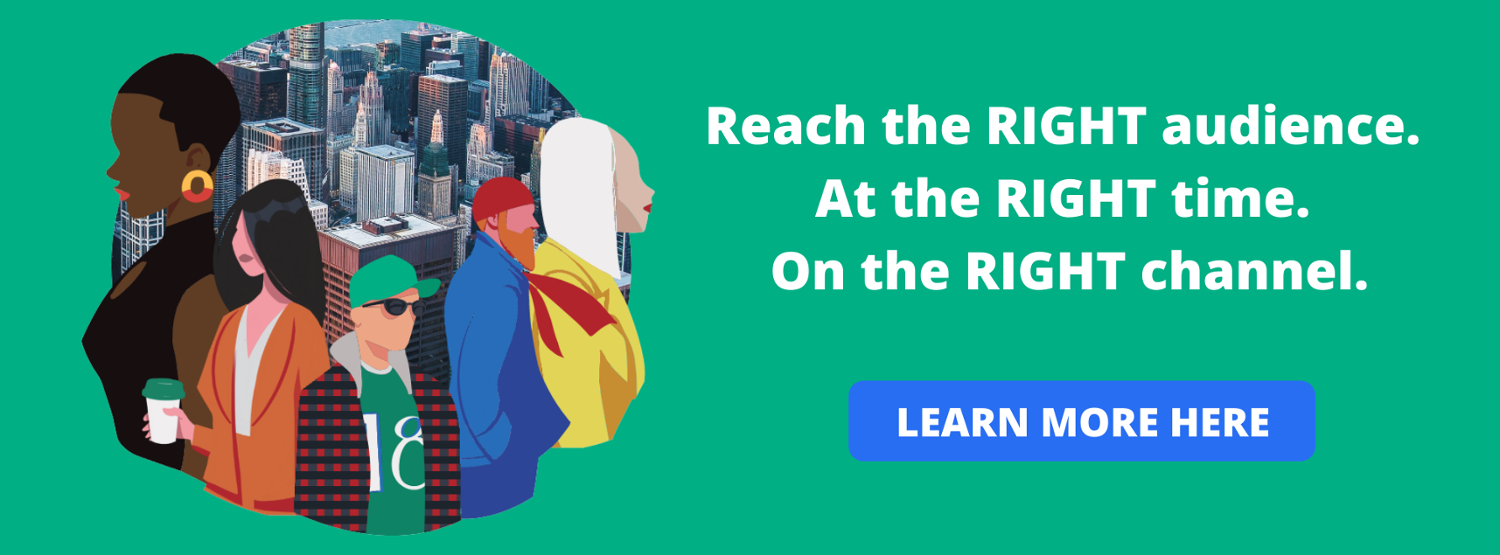Advertisers are leaving Facebook. So, where should they go?
We were recently asked what the best Facebook advertising alternatives are, so this is the topic we will discuss in this article.
TL;DR -> watch this video.
The mass exodus from Facebook continues as big brands like Coca-Cola, Unilever, and Verizon pull advertising from the major social network. In fact, all but one of Facebook’s top 10 advertisers halted spending, threatening the platform’s $70 billion operation.
It’s easy to see why they’re fleeing. Over the past few years, marketers have grown frustrated with misinformation, hate speech, walled-off data, decreasing organic reach, changing algorithms, and privacy breaches on the platform.
That’s quite the laundry list of issues, so it’s no surprise that brands are turning away from Facebook despite its massive audience. Sure, the network has over 2.6 billion users. But if you have to pay top dollar to navigate its algorithm and reach them — and still end up amidst brand-unsafe content — you’ll soon realize it’s not worth the hassle.
The question remains, as Jessica E. Lessin wrote for The Information, “Where are advertisers going to spend their money instead?”
The answer is multichannel messaging.
In this article, we will take a look at what that means.
But first…
Why are brands looking for alternatives to Facebook?
As mentioned above, brands are looking for alternatives to Facebook and other social media networks for a range of reasons. While they may have once relied on Facebook ads and organic posts to drive traffic and brand awareness, they can no longer do so.
Instead, they’re being pushed out by Facebook’s business model.
Diving in deeper, let’s unpack the main issues that have prompted companies to flee the platform and rethink their online marketing strategies.
Walled-off data
Walled gardens should evoke images of pretty flowers, stone sculptures, and arched walkways. Unfortunately, Facebook has given them a negative connotation. The social network is often called a “walled garden” because it owns your data and your audience. You can pump money into Facebook ads to expand your reach to new audiences, but at the end of the day, you’re not in charge of any information about those customer interactions — Facebook is. The data is owned by Facebook. As a result, it’s tough to translate that reach beyond Facebook and use that data to launch multichannel campaigns across the web.
That all means that, outside of Facebook, your targeting options are limited and you can’t personalize content according to Facebook audience interests. It’s like your audience on Facebook is comprised of window shoppers who see your offerings through the glass but never actually come into your store.
This is also a major reason why Google has come under fire. Sure, Google ads can reach targeted search engine users, but their data is, again, kept inside their walled garden. That’s why Facebook and Google are called a “duopoly” of media advertising — because they take all the market share for themselves but don’t cough up any of the valuable data that brands need to survive on their own.
Decreased organic reach
Facebook’s plummeting reach first made waves in 2014, when the social media platform changed its News Feed to show people only content deemed most relevant to them, instead of all content posted by users in their network. That meant people were missing a lot of posts from friends, family, and businesses — and brands and publishers were missing out on reaching a huge chunk of their audiences. An 80% chunk, in fact.
As Brian Boland of Facebook’s Ads Product Marketing team wrote, “Of the 1,500+ stories a person might see whenever they log onto Facebook, News Feed displays approximately 300.” Going further, a study from that time found that organic reach on Facebook had decreased by 50% from 2013 to 2014. Even worse, it dropped from a 16% reach to a 6.5% reach in just two years. Now, that reach is around 5.2%.
To make up for lost impressions and engagement, brands have been forced to run Facebook ads and allocate large portions of their budget to those campaigns. The problem is, not everyone has the funds to launch all those social media campaigns — or the willingness to comply with a “pay-to-play” network that once delivered 50% more reach and opportunity.
Data privacy breaches
Facebook has been at the center of major data privacy breaches for the past few years, giving social media users and brands great cause for concern.
In 2018, British analytics company Cambridge Analytica was found to have harvested 50 million Facebook profiles for data without permission. In 2019, Mexico-based media company Cultura Colectiva leaked 146 gigabytes of Facebook user data, including more than 540 million records about Facebook users. That same year, the social media platform was found to have exposed up to 600 million passwords in yet another data breach.
In a time when consumer trust is low and people are increasingly concerned about how companies are using their data, brands can’t afford to be associated with a platform that’s involved in so many scandals.
As Basecamp founder David Heinemeier Hansson said, “Facebook has a frankly despicable business model that’s predicated on violating people’s privacy and running an ad monopoly.”
The spread of misinformation
Facebook was infamously criticized for aiding the spread of misinformation or “fake news” during the 2016 U.S. Presidential Election. While the social network has tried to rectify its wrongs and tweak its policies to combat fake news, it looks like the same issues are resurfacing in 2020.
A new study found that misinformation on Facebook is 3X as popular as it was during the 2016 election. Specifically, user interactions with content from “deceptive” media outlets on Facebook have increased by over 240%. Another study found 40 Facebook pages that are “super-spreaders” of misinformation, flagging 53 posts in particular. And of those 53 posts, Facebook only identified three as false.
All of this spells danger for brands and publishers trying to promote their content in brand-safe environments. No one wants to launch ads in the same feed as posts sharing misinformation. So they pack their bags and start to look elsewhere for audience engagement and revenue.
Facebook Advertising Alternatives: Multichannel messaging
Being tied to one platform like Facebook is a dangerous move. That means the bulk of your customer data and audience interaction is tied to one place — and it’s locked inside a walled garden so you don’t have control over it if trends and behaviors change.
The best thing you can do now is diversify your advertising channels, reaching customers across platforms and building an owned audience based on comprehensive data. Think about it. Most consumers don’t only use one platform. They’re on email, apps, websites, social channels, browsers, and various devices. As Harvard Business Review reported, 73% of consumers use multiple channels during their research and purchase process. You just have to meet them there.
To help, we’ll dive into three of the most valuable Facebook advertising alternatives that brands can start utilizing today:
Email is a trusted, brand-safe channel where advertisers can reach consumers with targeted, personalized content — right in their inboxes. It’s also subscriber-based, so brands know they’re reaching people who want to engage with their messaging and learn more about what they have to offer. In fact, 63% of Internet users prefer to hear from brands through email — more than through any other channel, including social media and text message.
Beyond just being a distribution source for organic content, email newsletters are prime for monetization. Brands can drive revenue by directly or programmatically selling email ad space. Or, they can bid for space in top-tier publisher emails, expanding their reach and engaging target readers of relevant content.
Publishers should welcome the opportunity to join brands on this channel, too. After all, many are doubling down on subscriber acquisition strategies to make up for lost ad revenue. And since people have been hungry for accessible information during the COVID-19 pandemic, email opens and clicks increased by over 20%. With email monetization, advertisers can tape into these engaged audiences and deliver personalized experiences, and publishers can be better equipped to meet their bottom line.

French Morning Media, for example, was already running on-site banner ads, but they wanted to add a new source of revenue to their mix. So they started advertising across their weekly newsletters, which are sent to over 120,000 subscribers. Now, email banner ads and sponsored content drive 15% of the publisher’s total revenue. They also make advertisers happy by boasting a 25% open rate and a highly engaged, niche audience of readers.
Push notifications
There’s another content format that’s highly utilized by audiences but under-monetized by advertisers, presenting a major opportunity for driving revenue. That’s push notifications, which over 70% of digital consumers have enabled.
Push notifications first hit the market in 2003 on Blackberry devices. Email alerts were delivered right to users’ phones so they didn’t have to keep checking their inboxes manually. Today, push notifications are used widely across smartphones and web browsers, allowing consumers to receive personalized pings from their favorite apps, sites, and brands — so they don’t miss a beat.
That’s why, if marketers are leaving Facebook and looking for the next big channel, creating a push notifications promotional strategy should be at the top of their list. Just like email, push notifications are a form of opt-in, direct-to-consumer content that are tailored to each user’s interests. By launching push notifications for target audience segments, advertisers can drive traffic back to their websites and collect data about which content drives the most engagement.
Push notifications can also be monetized and used to drive revenue and conversions. E-commerce brands can use them to send timely offers and product alerts, for example. And publishers can use them to send breaking news updates and sponsored content. The point is that push notifications are real-time pop-ups that people actually want to see. Advertisers just have to get in there and deliver.

Take the GoGy Games platform, which hosts over 2,000 free online games for its 10-12 million monthly users. In an effort to grow its user base and increase engagement, the company invested in personalized push notifications. This allowed GoGy to send targeted notifications based on user interests and trending games in the community — substantially increasing clickthrough rates. GoGy also scheduled notifications to launch right when users are most likely to click across international time zones.
As a result, the platform drives tens of thousands of users each day from push notifications and enjoys low bounce rates and long session durations — bringing existing users back to the site and engaging new users with games that meet their interests.
Web
Brands can also create ads for placement on third-party websites, reaching consumers while they’re already engaging with content and interested in seeing relevant messaging. Many publications, for example, host display ads on article pages — at the top, bottom, side, and even in the middle of their content. As eMarketer reported, programmatic digital display ad spending is projected to exceed $86 billion in 2021, up from $68 billion 2020.
Website ads can also be native, blending in with the surrounding content to create a more intuitive consumer experience. These ads might take the form of articles or videos already on the site, just with a “Sponsored” disclaimer at the top.

Digital publisher Jungo Labs, for instance, runs a set of trivia websites and was looking to drive more revenue. Along with monetizing email campaigns, the company also launched display and native website ads to reach users while they take quizzes. The result? Jungo Labs saw a 200% increase in earnings and 80% increase in CPM.
Move outside of those walled gardens
Once you move outside the walled garden of platforms like Facebook, the world of advertising options starts to look a lot brighter. You can control your own data, own a direct connection with your audience, and launch targeted ads in brand-safe environments.
That’s why now is the time to invest in personalized, high-converting Facebook advertising alternatives like email, push notifications, and website ads — and Jeeng can help. Our Jeeng AdServe and integration with personalized notification platform Jeeng are built to automate your outreach and monetization across these channels, delivering immediate results.
Reach out today to start driving revenue and building your multichannel messaging strategy.





